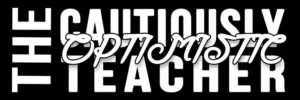In the dynamic landscape of modern education, project-based learning (PBL) has emerged as a pivotal instructional strategy, reshaping how students engage with their learning environments. At its core, PBL is an educational approach where learning is anchored around the completion of projects. These projects are typically complex, require significant time and effort, and aim to solve real-world problems or answer challenging questions.
The growing importance of PBL can be attributed to its effectiveness in developing essential 21st-century skills. In a world where information is readily available, the ability to critically analyze this information, creatively solve problems, and work collaboratively in diverse teams is more valuable than ever. PBL not only addresses these needs but also aligns well with the increasing emphasis on student-centered learning and holistic education.
The Benefits of Project-Based Learning
Enhancing Critical Thinking and Problem-Solving Skills: PBL challenges students to think critically and solve complex problems. Unlike traditional learning models that often focus on rote memorization, PBL encourages students to question, investigate, and explore. This process nurtures a deeper understanding of the subject matter and develops essential problem-solving skills.
Fostering Collaboration and Communication: Projects in PBL are often collaborative endeavors. Students work in teams, leveraging each member’s strengths and learning to communicate effectively. This collaboration mirrors the teamwork required in most modern workplaces, preparing students for future career demands.
Promoting Student Engagement and Motivation: The hands-on, active nature of PBL fosters increased student engagement. When students are involved in projects they find meaningful and relevant, their motivation to learn heightens. This engagement is further enhanced by the autonomy and choice often inherent in PBL activities.
Bridging Academic Concepts with Real-World Application: One of the most significant advantages of PBL is its ability to connect academic theories with real-world applications. Projects can be designed to address actual problems or explore real-world scenarios, making learning more relevant and impactful for students. This approach not only helps in retaining knowledge but also in understanding the practical utility of what they learn in school.
Key Principles of Effective Project-Based Learning

To harness the full potential of PBL, educators must ground their approach in several key principles:
Student-Centered Approach: Central to effective PBL is empowering students with choice and voice in their learning. This involves allowing students to make decisions about the project’s content, structure, and final outcome. When students take ownership of their learning, it enhances engagement and fosters a deeper connection with the subject matter.
Real-World Relevance: Projects should have a strong connection to real-world scenarios and challenges. This relevance helps students see the value and application of their learning beyond the classroom. It also prepares them for real-life problem-solving and critical thinking.
Reflective Process: PBL is not just about the end product but the learning journey. Encouraging students to engage in self-assessment and reflection throughout the project helps them recognize their growth, understand their learning processes, and identify areas for improvement. This reflective process is crucial for developing metacognitive skills.
How to Incorporate Project-Based Learning in Your Classroom
Implementing PBL can be a transformative experience for both teachers and students. Here are steps to effectively incorporate it into your classroom:
Identifying Suitable Projects: Choose projects that align with the curriculum and cater to student interests. Projects should be challenging yet achievable, with clear connections to the learning objectives. Consider student hobbies, current events, or community issues to make projects more engaging.
Planning and Structuring: Successful PBL requires careful planning and structuring. Set clear goals, timelines, and expectations at the project’s outset. Define the scope of the project and break it down into manageable tasks. Establishing a timeline helps students stay on track and manage their time effectively.
Facilitating Student Research and Inquiry: Guide students in conducting research and inquiry. Teach them how to gather information, evaluate sources, and synthesize their findings. Encourage them to ask questions and explore different perspectives.
Integrating Technology and Resources: Leverage technology and various resources to enhance the PBL experience. Digital tools can facilitate research, collaboration, and presentation. They can also provide access to a wealth of information and resources that students can use for their projects.
Assessment Strategies in Project-Based Learning

Assessment in project-based learning (PBL) requires a multifaceted approach to accurately gauge both the process and the product of student learning. Here’s how educators can effectively assess PBL:
Formative and Summative Assessment Techniques:
- Formative Assessment: This ongoing assessment occurs during the project. It involves checking students’ understanding and progress, allowing for timely interventions and support. Techniques include observations, student reflections, and progress discussions.
- Summative Assessment: Conducted at the end of the project, summative assessment evaluates the final product and the learning outcomes. This can include the final project presentation, a written report, or a portfolio showcasing the work completed.
Using Rubrics for Fair and Consistent Evaluation:
- Developing clear, detailed rubrics is essential for fair assessment in PBL. These rubrics should cover various aspects of the project, including research, collaboration, problem-solving, and the final product.
- Rubrics help students understand what is expected of them and provide a consistent framework for teachers to evaluate student work. This transparency in assessment criteria helps maintain fairness and clarity.
Providing Constructive Feedback to Foster Growth:
- Feedback in PBL should be ongoing, constructive, and specific. It’s not just about pointing out what needs improvement but also about acknowledging strengths and suggesting ways to enhance learning.
- Encourage peer feedback as well. This not only helps students refine their projects but also develops their ability to critique constructively and learn from one another.
Effective assessment in PBL is as much about evaluating the final product as it is about understanding and supporting the learning process. It requires a balance of structure and flexibility, allowing educators to adapt their assessment strategies to fit the unique context of each project and each learner.
Overcoming Challenges in Implementing PBL

Implementing project-based learning (PBL) can come with its set of challenges. Understanding and addressing these can lead to a more successful integration of PBL in the classroom.
Addressing Common Roadblocks:
- Time Constraints: PBL can be time-intensive. To manage this, integrate PBL with core curriculum objectives, allowing projects to serve as a vehicle for teaching required content.
- Resource Limitations: Limited resources can hinder project implementation. Get creative with materials, use digital resources, and encourage students to bring in resources from home. Collaboration with local businesses or community organizations can also provide additional support.
- Student Resistance: Some students might resist the less structured nature of PBL. To address this, clearly explain the benefits of PBL, set clear expectations, and provide scaffolding to help students adapt to this learning method.
Strategies for Successful Implementation:
- Start Small: Begin with shorter, less complex projects to build confidence and skills in PBL for both you and your students.
- Foster a Supportive Environment: Create a classroom culture that values inquiry, experimentation, and reflection. Encourage students to take risks and learn from failures.
- Professional Development: Engage in professional development opportunities focused on PBL. Collaborating and sharing experiences with other educators can provide valuable insights and strategies.
Conclusion
Project-based learning represents a transformative shift in education, moving away from traditional rote memorization to a more dynamic, engaging, and student-centered approach. The benefits of PBL are manifold, enhancing critical thinking, problem-solving skills, collaboration, and real-world application of knowledge.
As educators, embracing PBL means committing to an educational philosophy that values practical skills, student agency, and lifelong learning. While the transition to PBL can be challenging, the rewards in terms of student engagement and learning outcomes are profound.
Incorporating PBL into your teaching practice is not just about changing how you teach; it’s about changing how your students learn. It’s a journey that requires patience, creativity, and a willingness to embrace new ideas. However, the impact it can have on your students’ educational experiences and their preparedness for the future is immeasurable.

